

Kyushu J7W1 Shinden
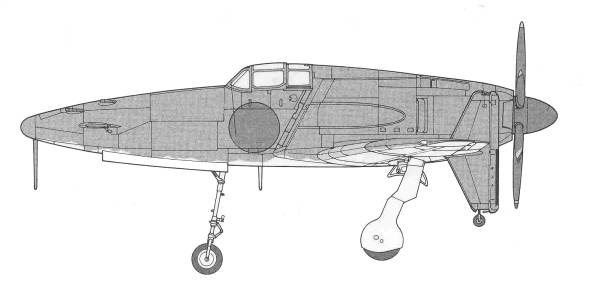
The Kyushu J7W1 Shinden (Magnificent Lightening) was the only aircraft of a canard configuration to be ordered into quantity production anywhere in the world during the second World War. It was also one of the most unusual types to be built in Japan. The aircraft's unusual design was due to Captain Tsuruno of the technical staff of the Japanese Navy, who from the outset contemplated the possibility of replacing the rear mounted radial engine with a turbojet.
Following initial work on this concept, the First Naval Air Technical Arsenal designed a glider to test the proposed aircraft's handling qualities at low speed. Three prototype gliders, designated MXY6, were built and began trials in the Fall of 1943. Later one of these was fitted with a 22 hp four cylinder air-cooled engine. With the feasibility of the canard design having been proved by the unpowered and powered version of the MXY6, the Navy instructed Kyushu to design an Otsu (B) Type Interceptor Fighter along these lines to meet the requirement of an 18-Shi specification. Kyushu was selected in spite of their lack of previous experience because their design team and production facilities were available. The Navy did assign a team lead by Captain Tsuruno to strengthen Kyushu's design capabilities.
Work on the J7W1 began in earnest in June of 1944 and the first prototype was completed within a mere ten month period. The nose, to which the horizontal stabilizers were attached, was to contain four 30 mm Type 5 cannon and housed the nose wheel. The pilot sat in the middle of the fuselage forward of the aft-mounted swept wings. The main undercarriage legs and wheels retracted laterally into the wings and small auxiliary wheels retracted into the base of the two vertical fins and rudders attached to the wings. The 2,130 hp Mitsubishi MK9D eighteen cylinder radial engine and its supercharger were installed in the fuselage behind the pilots cockpit and drove a six-blade propeller via an extension shaft. Engine cooling air was supplied by long narrow obliquely mounted intakes on either side of the fuselage. The navy, disparately needing a heavily armed high-performance interceptor fighter, decided prior to the aircraft's maiden flight to order it into production at Kyushu's Zasshonokuma factory and at Nakajima;s Handa plant. Considering the difficult conditions under which the Japanese aircraft industry was working at the time, the anticipated monthly output of 30 Shindens from Kyushu and 120 from Nakajima appears to have been overly optimistic and the Japanese surrender put an end to them.
Difficulties with engine cooling on the ground and the unavailability of some items of equipment delayed the first flight until August 3, 1945, when Captain Tsuruno took the aircraft for a short flight at Fukuoka Airport. Two other short flights were made bringing the total test time to some 45 minutes prior to the end of the war and revealed the need to correct a strong torque pull to starboard on takeoff and marked vibrations in the propeller and drive shaft. At wars end a second prototype had been completed but not flown and it was eventually dismantled and shipped to the United States. This aircraft is currently stored and the National Air and Space Museum in Washington, D.C. awaiting eventual restoration. Plans were also made for a J7W2 version in which the radial engine was to be replaced with a 900 kg thrust Ne-130 turbojet.
The Kit
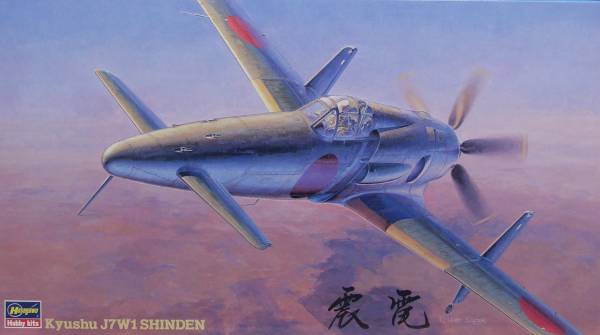
In spite of having a release date in the 90's this Hasegawa kit uses raised panel lines. From what I've read this is due to it being a Minicraft design that was re released by Hasegawa. The kit comes in a two part top open box with nice artwork on the top. Inside the box the parts are sealed in two bags. One has all but the clear parts and the other the clear parts and the decals. The parts are molded in a gray color and features both raised and recessed detail. The panel lines are mostly raised and are very fine so if you want them gone they will sand away easily. The parts exhibited a light amount of flash and the smaller parts had a slight parting line to remove. I did not find any sink holes in the major airframe parts. There were some ejector pin marks. The worst were on the inside of the main gear doors. Most of them were very light. The gear doors feature structure detail on the inside as does the fuselage in the cockpit area and in the closed in well wheels. The cockpit contains a good level of detail that starts with a tub and adds numerous parts to fill it out. The instrument panel has raised instrument detail. The seat lacks a harness and belts. The control surfaces are all fixed. The kit comes with a standing pilot figure. Altogether there are 51 parts in gray. The clear parts are thin and moderately clear. The canopy is molded in three parts so it can be positioned open if desired. Total of clear parts is three for a kit total of 54. See photos below.
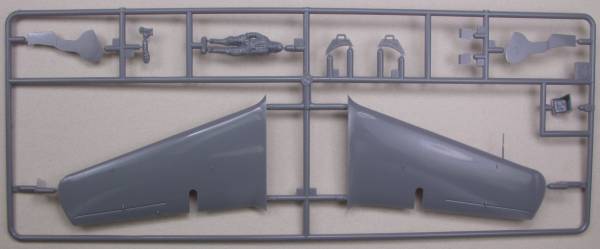
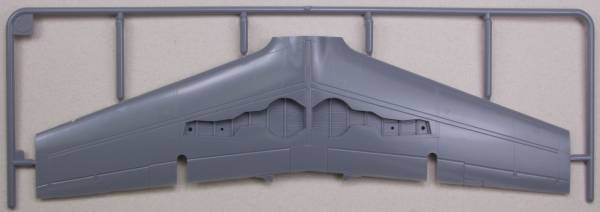
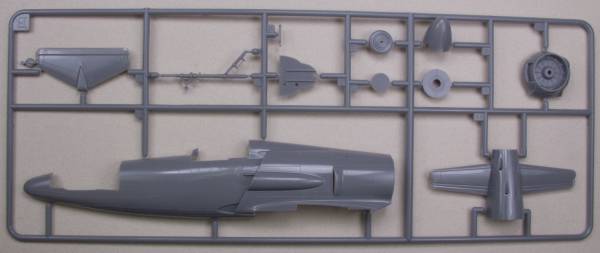
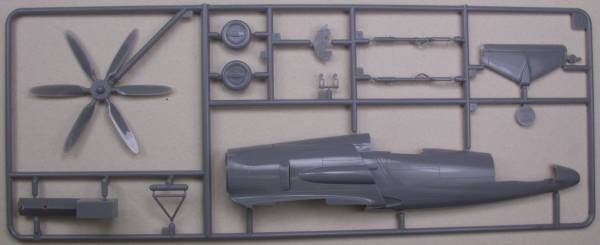

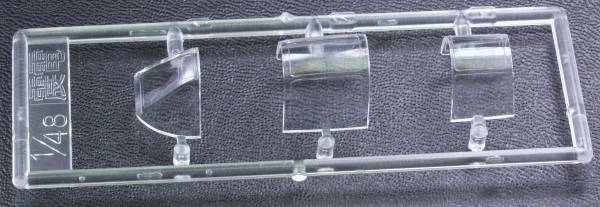
The decals appear thin and other than the national markings contain only striping and some Japanese characters. Markings are supplied for one aircraft. See below.
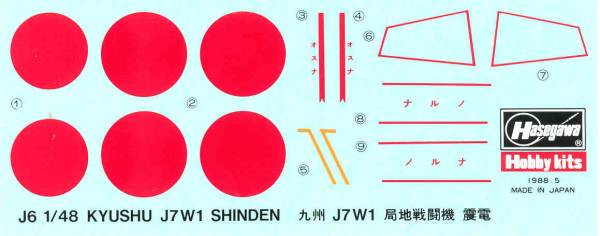
The instructions are printed on a long sheet folded to form eight panels. Panel one contains history and specifications in six languages, panels two through five have the assembly steps and along the bottom of these panels are the usual warnings, icon charts and paint chart. The last two panels have painting and marking instructions.
The only after market item that I am aware of is a replacement canopy from Falcon set # 33.
Conclusions
While probably not up to current standards the fit of the kit seems to be reasonable from the other reviews that I have read. As usual I was drawn to any aircraft of unusual configuration so this one fits right in. The kit shouldn't present and great difficulties to modelers at any skill level unless you desire to rescribe the kit.
Links to kit build or reviews
An inbox review can be found here and a build here.
References
Japanese Aircraft of the Pacific War by R.J. Francillion
Back to the MISC JAPANESE page
Updated 5/12/08